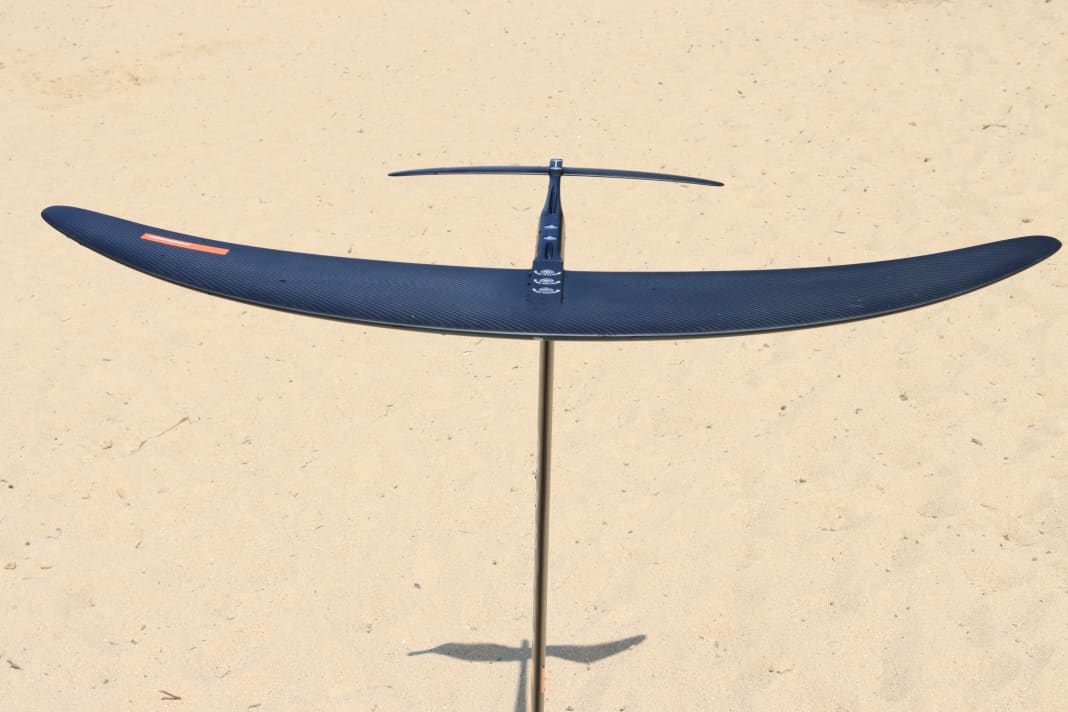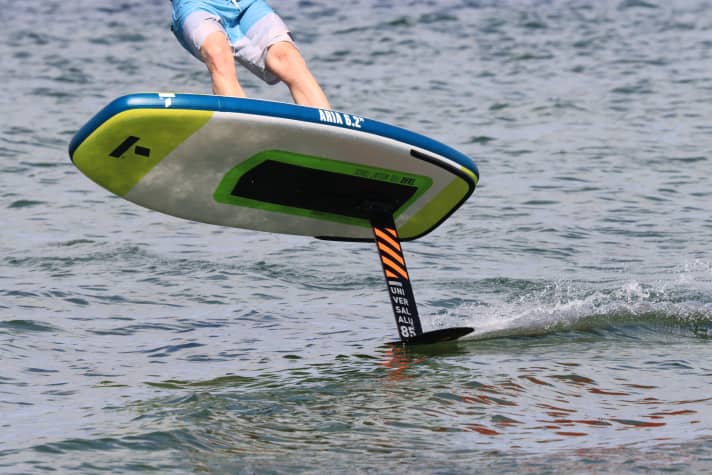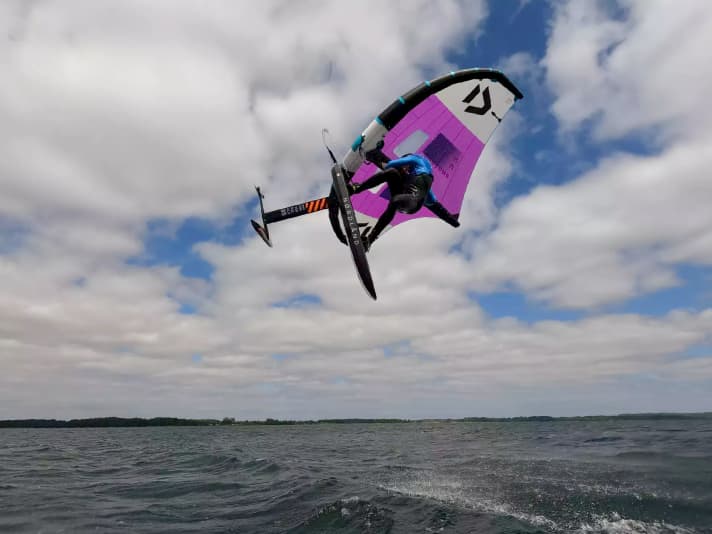
With the Dynamic Alu, RRD already has an easy-to-ride foil model for intermediates and freeriders in its range ( HERE there's a test). In addition, the new RRD Blaze Foil is primarily aimed at wingsurfers with more previous experience and combines high speed potential with good manoeuvrability.
On land:
For wingsurfers, four front wing sizes (950/1250/1550/1850) are relevant for the Blaze, and we were able to test the 1850 and the 1250 extensively. Both sets are supplied with an 85 mm aluminium mast. Two cross bolts have been added to the screw connection between the mast and mounting plate, which should prevent the mounting plate from shaking loose from the mast unnoticed. The connection between the aluminium fuselage and the mast also appears to be more solid than average - in addition to two M8 Torx screws, two M6 cross bolts also prevent the foil from shaking loose. This proved its worth in the test, although it does mean that the foil takes a little longer to assemble. Speaking of "assembly": the screw connections of the wings also appear very solid, with thick M8 Torx screws being used throughout. The appropriate screw length is printed directly on the wing, minimising the risk of confusion. Compared to the Dynamic Alu Foil, the RRD Blaze Alu has a slightly higher aspect ratio, i.e. the wing shape is slightly more elongated.






With the Blaze, the two small sizes of 950 and 1250cm2 are supplied with a 66mm fuselage, while the large sizes of 1550 and 1850cm2 are mounted on a long 76mm fuselage. Overall, both foil sets appear to be of high quality and fit perfectly.
On the water:
The greatBlaze 1850 gets up to speed well, the transition to take-off speed is very harmonious with a passive riding style, the take-off itself is then very predictable and very controllable even for less experienced wingers. Once in the air, the foil is very stable, especially the transverse axis (nose up, nose down) is well stabilised by the long fuselage, which means that minor load errors are hardly acknowledged. The speed potential is also more than acceptable for a foil of this size, small jumps are definitely possible, although freestylers who are aiming for jumps and tricks will probably tend towards a small and therefore faster front wing. In manoeuvres, however, the 1850 wing doesn't show any weakness either, it remains stable even at low speeds and offers a good mix of easy handling and yet a dash of turning ability, which also allows for the occasional tight hook.

TheRRD Blaze 1250 is also somewhat more demanding to surf due to its shorter 66 fuselage. Due to its size, the necessary take-off speed is only achieved in much stronger winds, but the shorter fuselage also allows wingers with pumping experience to pump the foil efficiently. Nevertheless, the actual take-off is somewhat more sudden than with other foils of this size. Once in the air, the Blaze 1250 reaches a good top speed, but requires more sensitive control due to the smaller wingspan and short fuselage. This makes it more difficult for wing beginners to maintain a stable flight attitude. Wingers with more experience will appreciate precisely this agility, because the RRD Blaze 1250 is wonderfully light-footed and can be turned into tight foil manoeuvres or turns on the wave without much pressure. When riding waves, however, it does need a bit of thrust, because due to the smaller wingspan of 86.5 centimetres, the "glide" is somewhat more moderate and on unpressurised swell waves you have to ride more actively (pumping) to stay in the air. Thanks to its high top speed, the foil is very easy to pop out of the water - a characteristic that every freestyler will appreciate.

RRD Blaze Alu Foil - the conclusion:
All in all, the RRD Blaze Alu 1250 appeals to the more experienced winger compared to the Dynamic Alu model. It impresses with great turning ability in the waves and great potential for freestyle tricks and smooth foil manoeuvres such as 360s and the like. Thanks to the significantly longer fuselage and large span, the Blaze 1850 offers noticeably more stability around all axes. It is therefore equally suitable for wing beginners as well as more experienced riders who are looking for an easy-to-ride foil for jibes, 360s and even their first jumps.

